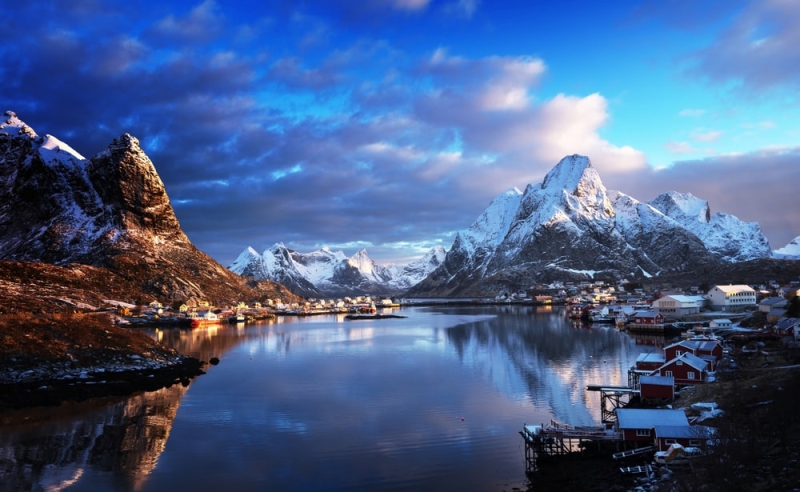
In 2017, the UN recognized Norway as the happiest country in the world, according to the World Happiness Report. And this despite the fact that winter reigns in the country for more than six months, and the sun comes out only for a few hours. But the Norwegians are not discouraged, but are doing everything possible for an interesting and comfortable winter in their country, including for tourists. We tell you what to see and do in winter Norway.
1. Take a walk around Oslo
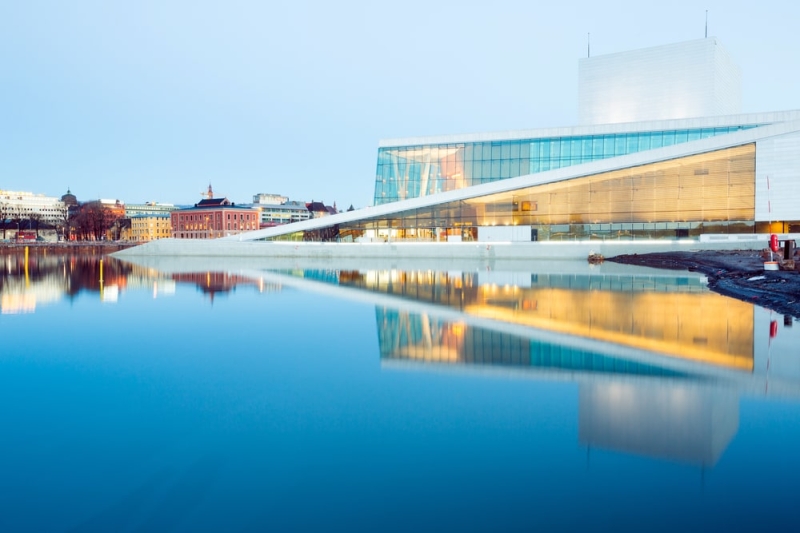
Photo: vichie81/Shutterstock.com
The winter weather in the capital of Norway is warm and humid, the temperature rarely drops below minus 7 degrees. Don’t be surprised if it rains in January. But Oslo is a compact city, and a few hours is enough to leisurely explore the center.
On the main street – Karl Johana, Oslo City Hall is located, where the Nobel Prize is awarded (free tours are organized in the city hall once a week),
Royal Palace, National Gallery with the famous work of Edvard Munch “The Scream”, a pier where local fishermen sell freshly caught and boiled shrimp. Next to the pier there is the New Opera building with a sloping roof, which you can and should climb onto. This is a favorite vacation spot for Norwegians – from the roof you can enjoy a panoramic view of the city center and a view of the islands of the Oslo Fjord with bright wooden houses.
On the Aker Brygge embankment you can see moored ships and try national cuisine in one of the restaurants. You can explore national catering at the Mathallen gastronomic center. They sell food from private Norwegian producers.
Near the embankment is the Askershus Fortress with the Museum of the Armed Forces, which is dedicated to the military craft of the country from the Vikings to the Second World War. History buffs should check out the Viking Ship Museum and the Kon-Tiki Museum, dedicated to the navigator Thor Heyerdahl. Here is a partially restored legendary wooden ship on which he and his crew crossed the Pacific Ocean.
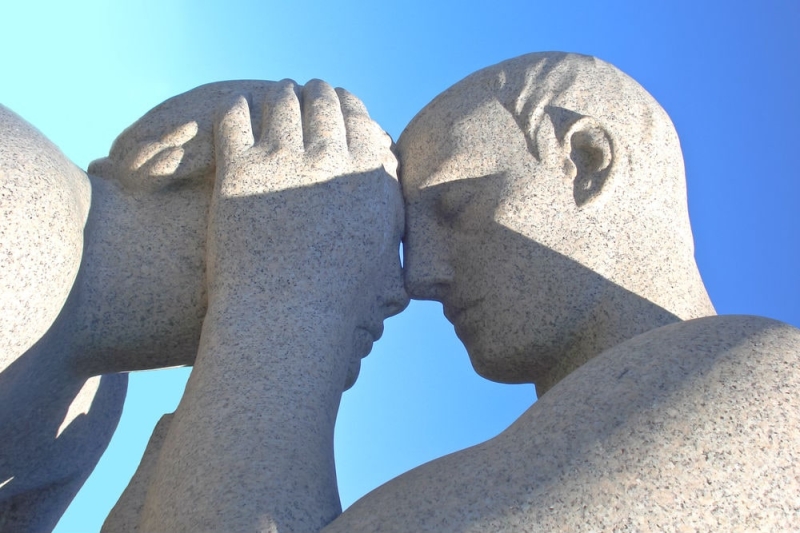
Photo: eFesenko/Shutterstock.com
If this is your first time in Oslo, stock up on hot drinks and, despite the weather, go to Vigeland Park. More than 200 human sculptures made of granite, bronze and cast iron are exhibited in the open air. They show different states of people: emotions, relationships, activities, for example, such as wrestling or dancing. The park is open all year round and admission is free.
Moving around the city and visiting museums is convenient and profitable with the Oslo Pass card – it gives you the right to visit more than 30 museums for free and use any public transport.
2. View the winter fjord
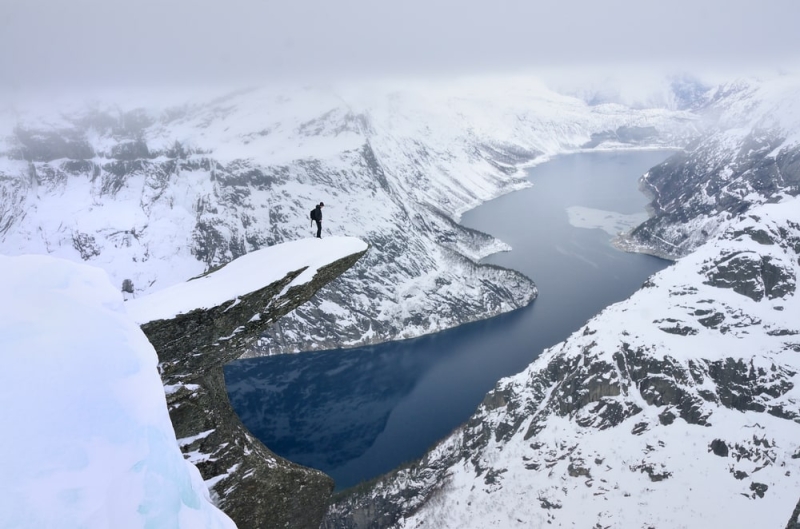
Photo: Shutterstock.com
The most famous fjords – Nærøyfjord, Sognefjord, Lysefjord, Geirangerfjord – are located on the west coast. In winter, the climate here is mild, and there are significantly fewer tourists than in summer. Thanks to the warm Gulf Stream, the fjords are usually not covered with ice. But the number of cruises and excursion ferries during the cold season is greatly reduced, and sometimes the flight is canceled due to bad weather. Due to the short winter days, excursion ferries leave early in the morning.
In winter, it is easier to sail along the Nærøyfjord – this is the narrowest fjord in the world, an arm of the large Sognefjord. In 2005, Nærøyfjord was included in the UNESCO World Heritage List. Its length is 18 kilometers, the fjord is surrounded on all sides by steep mountains, on the slopes of which there are cozy villages. They offer tourists to try Norwegian brown goat cheese.
You can look at the fjords from above from the Stegastein observation deck above the Aurlandsfjord. It protrudes 30 meters from the rock at an altitude of 650 meters. The site is open all year round. You can get to it from the tourist village of Flåm.
3. Ride one of the coolest railways in the world
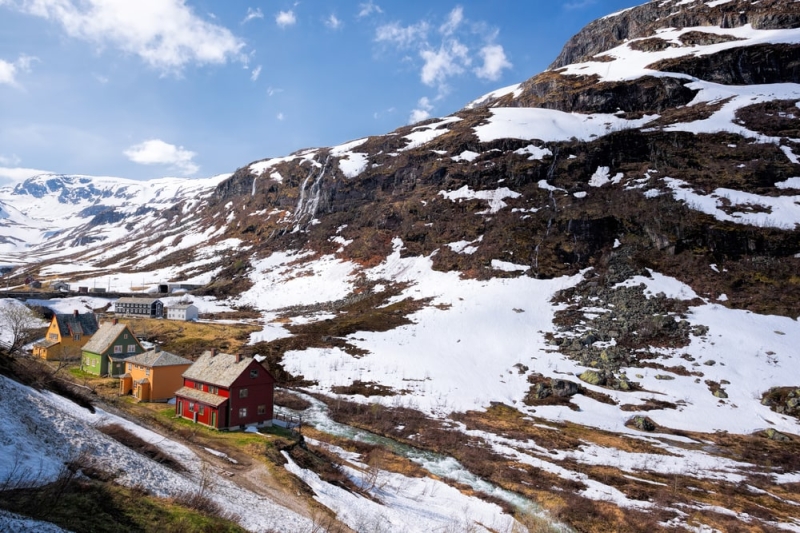
Photo: Shutterstock.com
National Geographic named the Flåm Railway trip one of the top ten best rail trips in Europe, and Lonely Planet Traveler named it the best rail trip in the world.
The train takes passengers in an hour from a tributary of the Sognefjord in the village of Flåm to Myrdal station at an altitude of 867 meters above sea level. Outside the window during the trip are all the classic Norwegian landscapes: from the fjord and its valley to snow-capped peaks, past waterfalls and mountain rivers. The Flåm railway has one of the steepest gradients in the world: 80% of the line runs at a slope of 5.5%.
You can also get to Myrdal station by the Bergen Railway from Oslo. In Myrdal you can change to the Flåm line and go down to Flåm to the fjord (more information about the Bergen Railway can be found at www.nsb.no).
4. Go skiing or snowboarding with views of the fjords
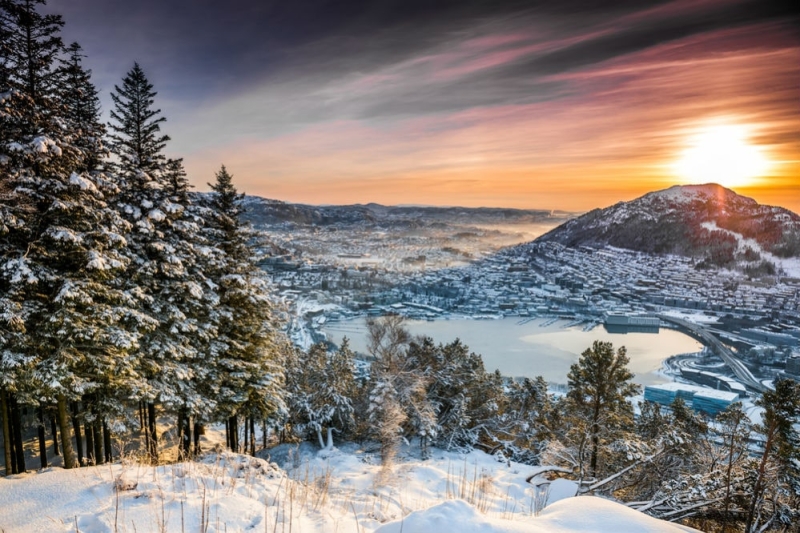
Photo: Shutterstock.com
Alpine skiing is the national sport of Norway. Local residents are proud of skier, 2010 Olympic champion Axel Lund Svindal, and one of the world’s first skiers, Sondre Nurheim, who invented the ski binding in the second half of the 19th century. The invention made skating comfortable and became the prototype of modern models.
Ski resorts are located everywhere in Norway, but the most popular is skiing in the fjord region. The mountains here rise from the blue, non-freezing water to a height of almost 2,000 meters. This region will especially appeal to fans of off-piste skiing.
Major ski resorts in the fjord region are located in Voss, Myrkdalen, Syrdal, Sogndal, Sognefjord, Strandafjell and the Alpepass region (in the latter, a ski pass gives access to the ski lifts at nine resorts). Almost all resorts have ski schools.
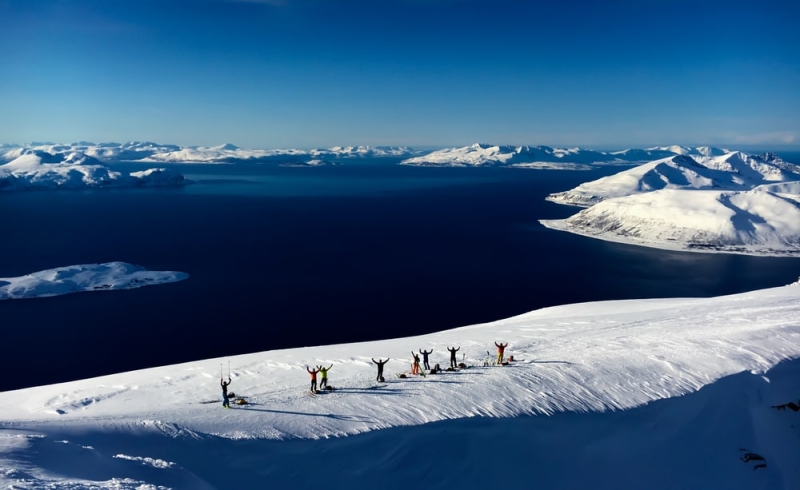
Photo: Shutterstock.com
You can also go skiing on the slopes in Oslo. The Trivann winter park with trails is located a 30-minute drive from the city center. It is easy to get from the capital to large resorts in Eastern Norway: Jotunheim, Trysil, Hemsedal, Lillehammer (the Winter Olympics were held here in 1994, and you can stay at the resort in an ice hotel: sleep at a temperature of -3 to -7 degrees on an arctic bed under a cozy sheep’s clothing),
Nurefjell and others.
It’s worth going to the north of the country for skiing with a view of the sea. But the climate there is also harsher – on average the temperature drops to -20 degrees, and there are frosts below -40.
Another type of active recreation is also common among local residents in Norway: a one-day cross-country skiing trip with a small supply of provisions: a hot drink in a thermos, chocolate and sandwiches. Contact local travel agencies to organize such a vacation.
5. Cross the Arctic Circle
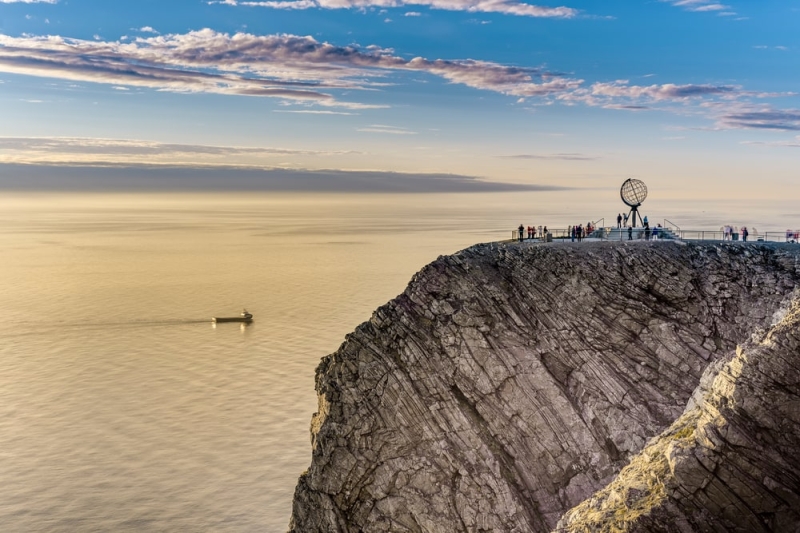
Photo: Shutterstock.com
To cross the Arctic Circle, head to the North Cape, the northernmost point of continental Europe. Here you will be separated from the North Pole only by the ocean and the Spitsbergen archipelago.
Thanks to the Gulf Stream, the climate on the Cape is mild: in winter the average temperature is –3 degrees, but sometimes drops to –15. From November 21 to January 21, the region experiences polar nights and the sun does not rise above the horizon. But this does not prevent tourism from developing: in winter, people here ride dog and reindeer sleds, snowmobiles, watch the northern lights and go ice fishing in local lakes.
The North Cape Hall information center operates on the cape all year round.
6. Visit the Lofoten Islands
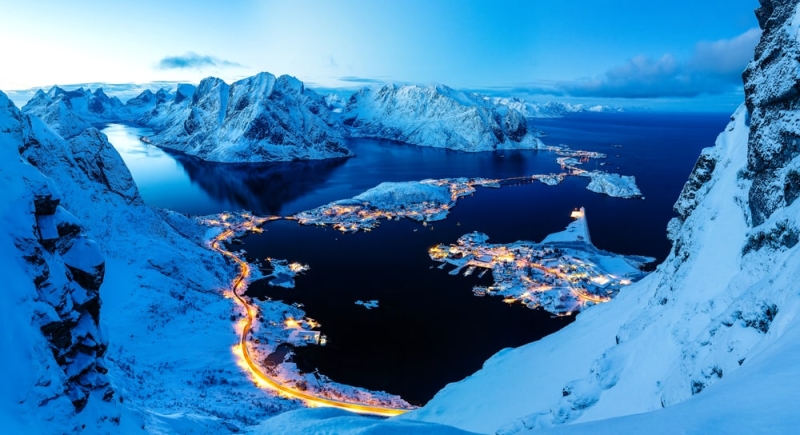
Photo: Shutterstock.com
The islands are also located beyond the Arctic Circle, in the Norwegian Sea. People go to Lofoten for views of the harsh polar nature, the northern lights and original fishing villages with colorful houses.
On the islands you can stay in a traditional fisherman’s hut – “rorbu” and try the local dish – “törrfisk”. This is dried cod caught during spawning.
There are many traces of the Vikings left on the islands. Archaeologists discovered their largest dwelling here – it is 83 meters long. The find was restored and turned into a living museum.
7. See the Northern Lights
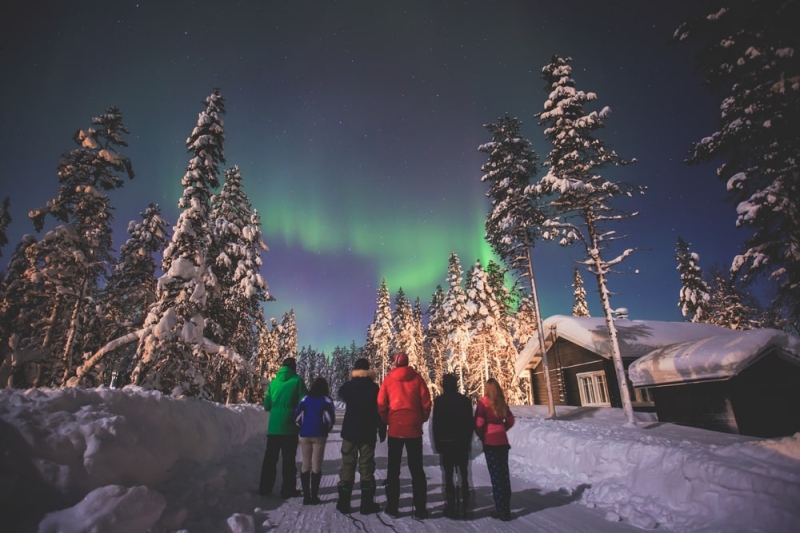
Photo: Shutterstock.com
Norway is considered one of the best places to observe the Aurora Borealis (Aurora Borealis – the Latin name for the northern lights). In the northern regions of the country, the aurora regularly appears in the sky, and the mild climate and developed infrastructure make “hunting” for it accessible and comfortable.
The northern lights belt covers the area from the Lofoten Islands to the North Cape. A popular place among tourists is the city of Tromsø. It is the largest city in Northern Norway, with untouched nature right behind it. Tromsø offers a wide variety of Northern Lights tours, including snowmobile tours.
Aurora Borealis is observed in Norway from late September to late March. The likelihood is thought to increase in dry, cold weather. You can track forecasts through the Norway Lights app.
8. Look at the strongest flow of water in the world
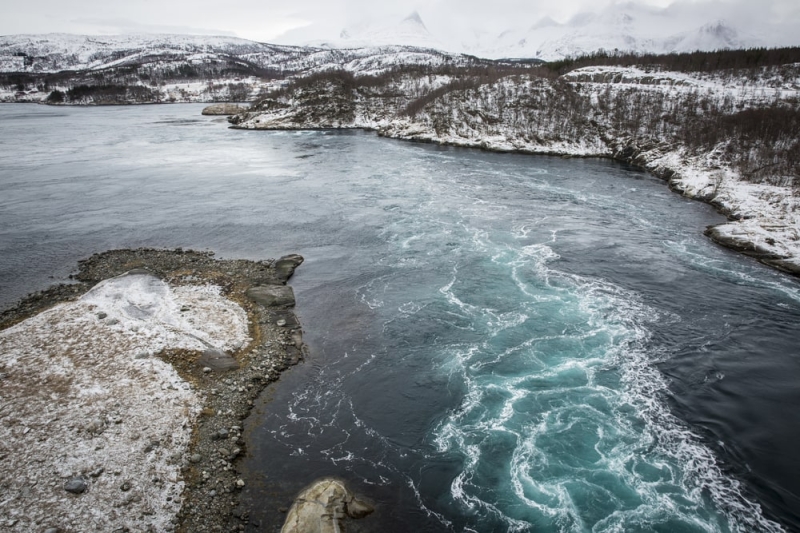
Photo: Shutterstock.com
Near the Norwegian town of Bodø, in a narrow strait between two fjords, you can see the world’s strongest tidal current – the Saltstraumen whirlpool. The flow of water rushes through the narrow strait at a speed of 40 km/h and collides with the ebb current, resulting in the formation of deep funnels with a diameter of up to 12 meters. This phenomenon repeats every six hours. Travel agencies create a daily schedule depending on the phases of the moon. Salstraumen is observed from the bridge that connects the banks of the fjord and passes over the sinkholes. Particularly brave tourists go by boat to the powerful craters, but this is dangerous entertainment.
9. See killer whales in the wild
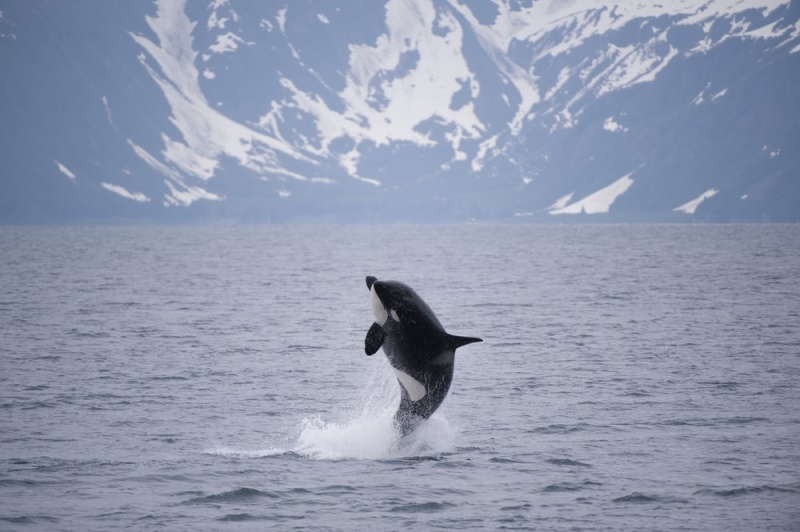
Photo: Shutterstock.com
In winter in Norway you can see entire pods of whales right from the shore. From October to February, killer whales and humpback whales feast on small fish in the cold waters of the Lofoten Islands, often jumping out of the water. They come closest to the shore at the Vesterålen archipelago, which is located north of Lofoten. It’s better to contact a travel agency and sail a boat several kilometers from the shore to see giant aquatic animals up close.
Text author: Daniya Gaisina

